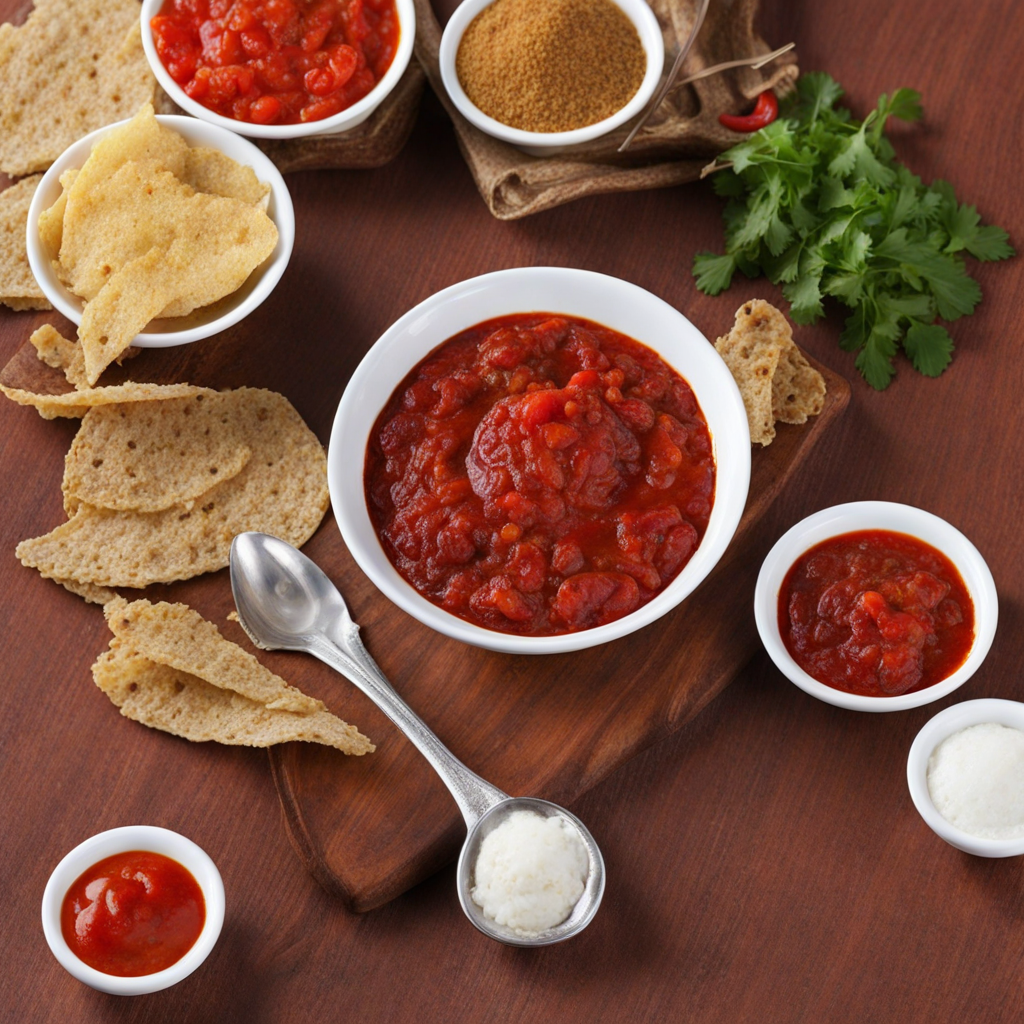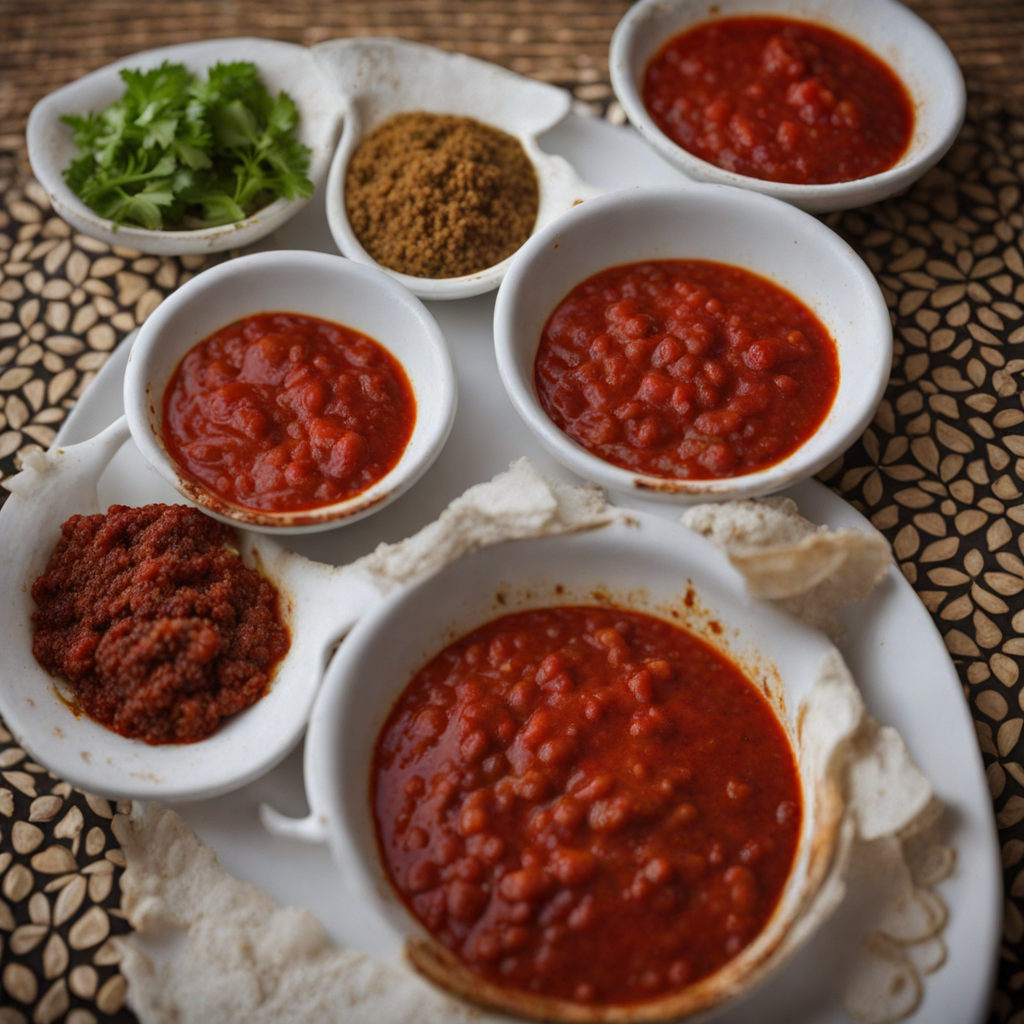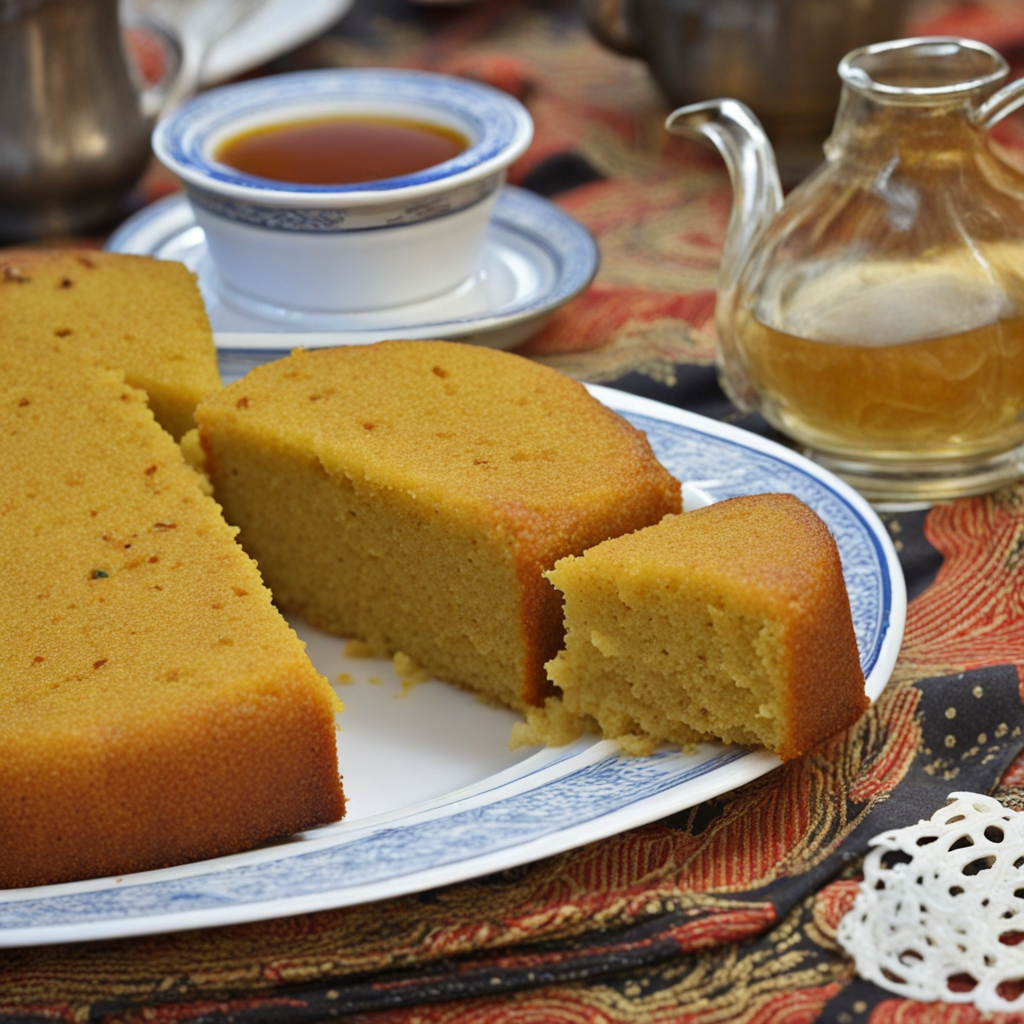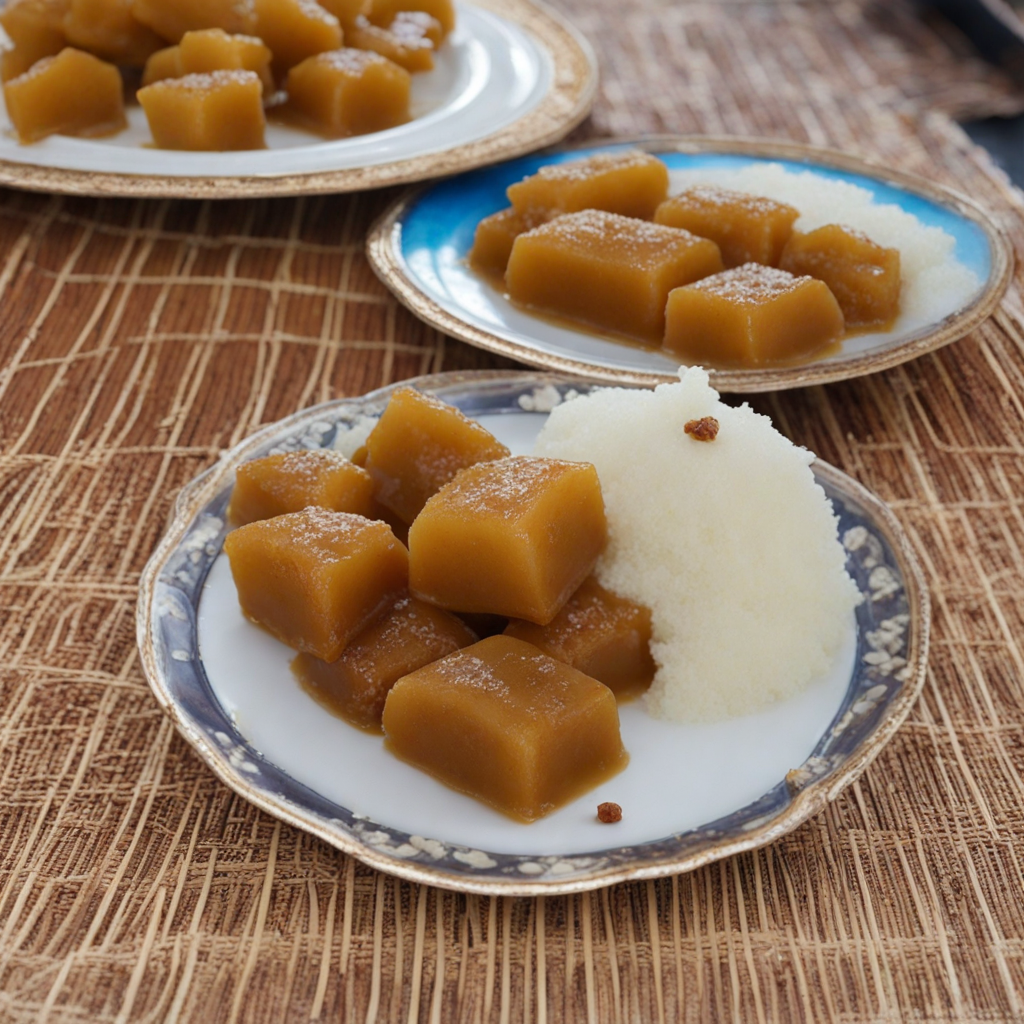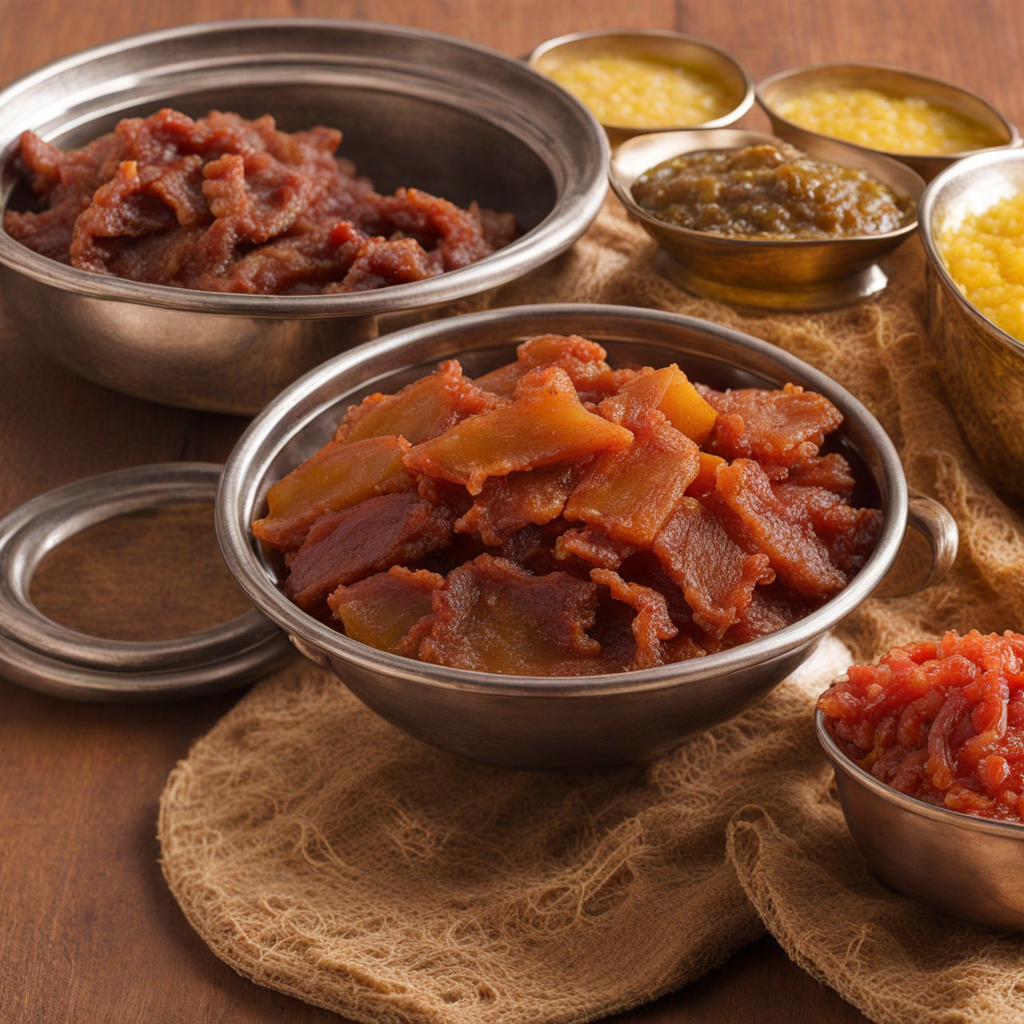Basbaas
Basbaas is a vibrant and flavorful Somali condiment that captures the essence of East African cuisine. This spicy sauce is typically made from a blend of fresh ingredients, including ripe tomatoes, green chilies, garlic, and onions, all finely chopped and mixed together. The base of Basbaas is often enhanced with a variety of spices such as cumin, coriander, and sometimes even a hint of lemon or vinegar, creating a tangy and zesty profile that invigorates the taste buds. It is this unique combination of flavors that gives Basbaas its characteristic kick, making it an essential accompaniment to many Somali dishes. In Somalia, Basbaas is not just a condiment; it serves as a culinary bridge, elevating simple meals to new heights. It pairs beautifully with traditional dishes like canjeero (a type of Somali pancake) or rice and stews, providing a refreshing contrast to the rich and hearty flavors. The sauce can be used as a dip for snacks or as a topping for grilled meats, enhancing the overall dining experience with its fresh and spicy notes. The versatility of Basbaas makes it an inviting addition to any meal, whether you are enjoying a festive occasion or a casual family dinner. What truly makes Basbaas stand out is its ability to cater to individual tastes, as it can be adjusted in heat and acidity levels according to personal preference. Some variations might include additional ingredients like mango or avocado, offering a sweet twist alongside the heat. For those seeking a culinary adventure, trying Basbaas is not just about tasting a new condiment; it's about experiencing the rich culinary heritage of Somalia, where food is deeply tied to culture and community.
How It Became This Dish
The History of Basbousa: Somalia’s Sweet Semolina Delight Origin and Etymology Basbousa, a beloved dessert in Somalia and across the Middle East, is a cake made primarily from semolina, sugar, yogurt, and coconut. The name "Basbousa" is derived from the Arabic word "بسبوسة," which relates to the idea of "soaked," hinting at the cake’s luscious syrup-soaked texture. While the dish is prevalent in various forms throughout the Arab world—often referred to as Hareeseh or Revani depending on the region—its history in Somalia carries unique cultural nuances that reflect the nation’s rich culinary tapestry. The roots of Basbousa can be traced back to the nomadic tribes of the Arabian Peninsula, where the use of semolina, a byproduct of durum wheat, was common. This ingredient was favored due to its long shelf life and versatility. It is believed that Basbousa made its way to the Somali coast through trade and cultural exchanges, particularly during the flourishing period of the Indian Ocean trade routes. Cultural Significance In Somali culture, food is deeply intertwined with social customs, celebrations, and gatherings. Basbousa is more than just a dessert; it is a symbol of hospitality, generosity, and joy. It is often prepared during special occasions such as weddings, Eid celebrations, and family gatherings. During Ramadan, Somali families commonly prepare Basbousa to break their fast, serving it alongside other traditional dishes. The sweetness of the cake represents the joy of sharing and community, as families and friends come together to celebrate their faith and festivities. The preparation of Basbousa is also a communal activity, often involving multiple generations of family members. This practice reinforces familial bonds and preserves culinary traditions. The process of making Basbousa can be seen as a ritual in itself, where ingredients are lovingly mixed, poured into a pan, and baked until golden brown, followed by the all-important step of soaking in a fragrant sugar syrup. This communal aspect of baking is a crucial part of Somali culture, where food serves as a medium for storytelling and preserving heritage. Development Over Time The evolution of Basbousa in Somalia reflects broader changes in culinary practices and ingredients over the years. Historically, the dish was prepared using locally sourced ingredients, with semolina and sugar being staples in Somali households. As trade routes expanded and new ingredients became accessible, variations of Basbousa began to emerge. In the early 20th century, the influence of Italian colonization introduced new flavors and techniques to Somali cuisine. This period saw the incorporation of additional elements such as almonds, which were used for garnishing, and the addition of yogurt, which enhanced the cake’s moistness and flavor. The use of coconut, a remnant of the Indian Ocean trade, also became a defining characteristic of the dish, reflecting Somalia's coastal geography and cultural exchanges with other regions. After the Somali Civil War in the late 20th century, the diaspora began to grow, and with it, the international appreciation for Somali cuisine, including Basbousa. Somali communities established in Europe, North America, and Australia brought their culinary traditions with them, introducing Basbousa to new audiences. This global diaspora has led to the emergence of fusion recipes that blend traditional Somali flavors with contemporary culinary trends, showcasing the adaptability of Basbousa. As Somalia has experienced periods of conflict and instability, food has remained a vital source of comfort and resilience. Basbousa has served as a reminder of home for many in the diaspora, a link to their roots, and a way to maintain cultural identity in foreign lands. The act of preparing and sharing Basbousa has fostered a sense of community among Somalis abroad, allowing them to pass down traditions to younger generations. Modern Interpretations and Variations Today, Basbousa can be found in various forms, reflecting regional preferences and personal tastes. While the traditional recipe remains popular, contemporary adaptations have emerged. Some versions incorporate ingredients such as rose water or orange blossom water to infuse the cake with floral notes, while others experiment with toppings like pistachios or chocolate. In Somalia, Basbousa is often served with a side of tea or coffee, emphasizing the importance of hospitality. The cake can be cut into diamond or square shapes, making it easy to share. In restaurants and bakeries across Somalia and the diaspora, Basbousa is frequently featured on dessert menus, appealing to both traditionalists and new generations of food lovers. As global interest in Somali cuisine continues to grow, Basbousa has emerged as one of the signature dishes that represent the country’s culinary identity. Food festivals and cultural events often highlight Basbousa, showcasing its significance within Somali gastronomy and its place in the broader narrative of East African cuisine. Conclusion Basbousa is more than just a sweet treat; it encapsulates the rich history of Somalia, a land shaped by trade, cultural exchange, and resilience. From its origins in the Arabian Peninsula to its cherished status in Somali households, Basbousa serves as a delicious reminder of the importance of community, tradition, and the shared joy of food. As this dessert continues to evolve and adapt within the global culinary landscape, it remains a steadfast symbol of Somali culture, celebrating both its past and its promising future. Whether enjoyed at a festive gathering or a quiet family meal, Basbousa is a testament to the enduring power of food to connect people, honor traditions, and create lasting memories.
You may like
Discover local flavors from Somalia


